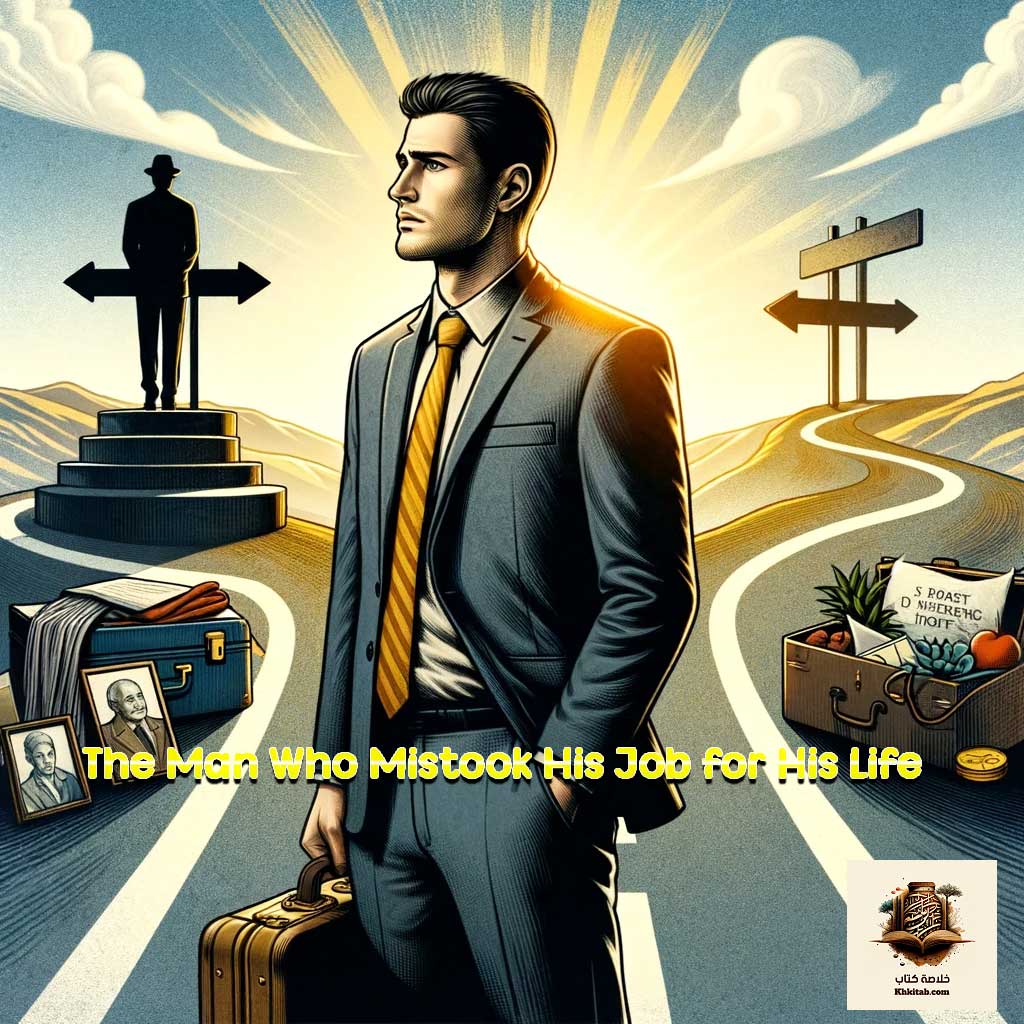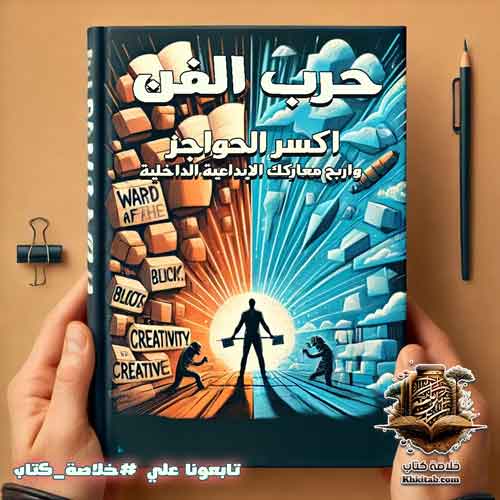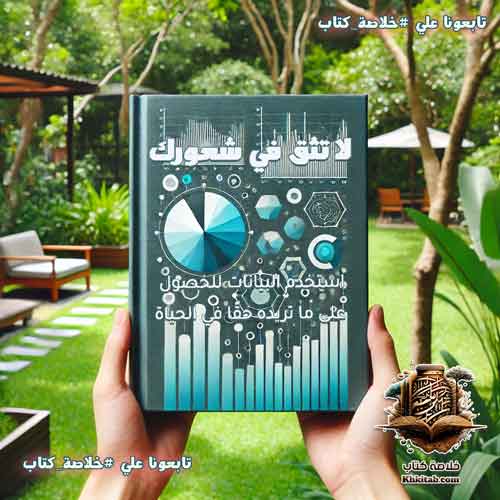Don’t Overthink It: Make Easier Decisions, Stop Second-Guessing, and Bring More Joy to Your Life Book Summary

In a fast-paced and challenging world filled with choices, many of us grapple with the issue of overthinking, which can be a barrier to happiness and contentment in our lives. In the book “Don’t Overthink It: Make Easier Decisions, Stop Second-Guessing, and Bring More Joy to Your Life,” author Anne Bogel offers a unique and practical approach to addressing this issue.
This book sheds light on how overthinking can drain our energy, diminish our ability to enjoy the present moment, and hinder the decision-making process. It delves into the reasons behind overthinking, such as the fear of failure, the pursuit of perfection, and the challenges posed by the endless choices in our daily lives.
What sets this book apart is its presentation of clear, actionable strategies to reduce overthinking. Bogel encourages readers to simplify the decision-making process by categorizing decisions as important or unimportant and setting time limits for making decisions. This approach helps reduce mental stress and allows for more effective decision-making.
إقرأ أيضا:101 Psychological Tricks to Tame the Mind: Your Guide to Personal TransformationAdditionally, the book emphasizes the importance of developing positive habits to replace overthinking. Through practices like meditation and journaling, readers can stay grounded in the present moment and avoid falling into the trap of excessive analysis. Bogel also highlights the significance of self-compassion and accepting that falling into overthinking is part of human nature.
The book concludes with an invitation to embrace joy and happiness in life by reducing overthinking. Bogel reminds readers that life is full of uncertainties and attempting to control every detail through overthinking is not only futile but can also hinder the full experience of life.
“Don’t Overthink It” is not just a book; it’s a practical guide that provides readers with the tools they need to change their lifestyle and take steps towards a more relaxed and joyful life.
What Is Overthinking and How Does It Affect Our Lives?
In “Don’t Overthink It: Make Easier Decisions, Stop Second-Guessing, and Bring More Joy to Your Life,” Anne Bogel tackles the subtle yet pervasive issue of overthinking, a phenomenon that many encounter but often overlook. The book commences with a detailed exploration of what constitutes overthinking and its far-reaching impact on various facets of our lives.
Overthinking is defined in the book as the process of thinking about something too much or for too long. While it’s natural to ponder over decisions or life events, overthinking crosses into a territory where it becomes counterproductive and exhausting. It’s a common trap where the mind gets caught in a loop, rehashing thoughts and scenarios, leading to a state of inaction or increased anxiety.
Bogel skillfully elucidates how overthinking doesn’t just stay confined to our minds. Its effects ripple out, influencing our mental health, decision-making processes, and overall life satisfaction. For instance, when we overthink, we tend to get stuck in a cycle of rumination and worry, which can lead to feelings of stress, anxiety, and even depression. This mental state can cloud our judgment, making it difficult to make decisions or take action, ultimately affecting our life’s progress and happiness.
The book also highlights that overthinking can stem from a desire for perfection or fear of making the wrong decision. In today’s world, where we are bombarded with choices and information, the tendency to overthink has become more prevalent. This abundance of options and the pressure to make the ‘right’ choice every time can lead to a paralysis of analysis, where we find ourselves unable to decide at all.
In addressing overthinking, “Don’t Overthink It” not only defines and outlines the problem but also sets the stage for the subsequent chapters that delve into practical strategies for overcoming this mental habit. By understanding the nature and impact of overthinking, readers are better equipped to recognize these patterns in their own lives and take proactive steps towards a more decisive and joyful way of living.
The initial exploration of overthinking in this book is an essential foundation for anyone looking to improve their decision-making skills and increase their overall life satisfaction. It’s a thought-provoking start to a journey of self-improvement and mental clarity.
Our Facebook Page – Book Summary
What Drives Us to Overthink According to ‘Don’t Overthink It’?
In “Don’t Overthink It: Make Easier Decisions, Stop Second-Guessing, and Bring More Joy to Your Life,” Anne Bogel provides an insightful exploration into the causes of overthinking, a critical step for anyone seeking to understand and overcome this often-debilitating habit. The book’s deep dive into why people overthink is essential for anyone looking to make meaningful changes in their decision-making processes and overall approach to life’s challenges.
One of the primary causes of overthinking, as Bogel explains, is the fear of making wrong decisions. This fear can be paralyzing, leading individuals to mull over choices endlessly. It stems from a desire to avoid mistakes and the consequences that might follow, which in turn creates a cycle of anxiety and indecision. This aspect of overthinking is particularly relevant in today’s world where the emphasis on making ‘right’ choices is often exaggerated, adding pressure to even the most mundane decisions.
Perfectionism is another significant contributor to overthinking that Bogel discusses. For perfectionists, the drive to achieve flawless outcomes can lead to an excessive focus on details and potentials, often resulting in a state of overanalysis. The pursuit of perfection, while seemingly a positive goal, can be counterproductive, leading to procrastination and a lack of satisfaction with any outcome that is less than perfect.
Furthermore, the book delves into how the modern world, with its overwhelming abundance of choices, exacerbates the tendency to overthink. From simple daily decisions like what to eat or wear to more significant life choices like career paths or financial investments, the sheer volume of options available can be overwhelming. This abundance of choice often leads to what psychologists term ‘choice overload’, where the difficulty of making a decision increases with the number and variety of options, thereby fueling the cycle of overthinking.
Bogel’s exploration of these causes is not just theoretical; she also offers insights into how these factors play out in everyday scenarios, making it relatable to the reader. This understanding of the root causes of overthinking is crucial as it forms the foundation for the strategies and solutions presented later in the book for combating this habit. By comprehending the reasons behind our tendency to overthink, we are better positioned to tackle it head-on and move towards a more decisive and joyful way of living.
This detailed analysis of the causes of overthinking in “Don’t Overthink It” serves as a vital guide for readers to recognize and address the underlying issues that lead to this mental trap. It’s a crucial part of the journey towards a more efficient, less stressful, and more fulfilling life.
Life Sciences & Medicine – Book Summary Library (khkitab.com)
How Does the Digital Age Intensify Overthinking as Described in ‘Don’t Overthink It’?
In “Don’t Overthink It: Make Easier Decisions, Stop Second-Guessing, and Bring More Joy to Your Life,” Anne Bogel takes an insightful look into how the digital age, particularly the influence of technology and social media, intensifies the habit of overthinking. This section of the book offers a nuanced understanding of the unique challenges posed by our modern, connected world and how it contributes to making overthinking a more prevalent issue.
The digital age, characterized by constant connectivity and a deluge of information, has a significant impact on our mental processes, especially when it comes to decision-making and problem-solving. Bogel points out that the endless stream of data and opinions we receive through our devices can overwhelm our cognitive capacities. This inundation of information makes it harder to sift through what is relevant and what is not, leading to increased indecision and overanalysis.
Social media, a cornerstone of modern digital life, is particularly highlighted in the book for its role in exacerbating overthinking. Platforms like Facebook, Instagram, and Twitter not only provide an endless feed of information but also create a space where comparisons and social judgments are commonplace. This environment can lead to second-guessing one’s decisions and life choices, as constant exposure to others’ lives and achievements can distort our perception of what is normal or desirable.
Moreover, Bogel discusses how the digital age has introduced an array of choices in every aspect of our lives, from simple daily decisions to major life events. This plethora of options, facilitated by the internet and digital platforms, can lead to what psychologists term ‘analysis paralysis’ – a state where the individual becomes so overwhelmed by choices that they are unable to make a decision.
The book also delves into the psychological effects of digital overload, discussing how it can lead to a state of mental fatigue that is conducive to overthinking. With our brains constantly processing information and stimuli, the ability to focus and make clear, concise decisions can become impaired. This digital fatigue, as Bogel suggests, is a key factor in why many find themselves trapped in cycles of overthinking in the modern era.
In addressing these challenges, “Don’t Overthink It” not only raises awareness of the unique problems posed by the digital age but also prompts readers to consider how they interact with technology and social media. It encourages finding a balance between staying informed and connected and preserving mental clarity and decision-making efficiency.
This exploration of overthinking in the context of the digital age in “Don’t Overthink It” is a crucial part of understanding how our contemporary lifestyles influence our mental habits. It provides valuable insights for anyone looking to navigate the complexities of the modern world without falling prey to the pitfalls of overthinking.
How Does ‘Don’t Overthink It’ Simplify the Decision-Making Process?
In “Don’t Overthink It: Make Easier Decisions, Stop Second-Guessing, and Bring More Joy to Your Life,” Anne Bogel offers practical strategies to streamline the decision-making process, a crucial aspect for anyone looking to reduce overthinking. This section of the book is particularly valuable for those who find themselves frequently bogged down by indecision and analysis paralysis. Bogel’s approach to simplifying decision-making is both insightful and actionable, providing readers with concrete methods to enhance their decision-making efficiency.
A key strategy that Bogel presents is the differentiation between major and minor decisions. She emphasizes that not all decisions hold the same weight, and recognizing this difference is crucial. Major decisions, which have significant long-term effects, deserve more time and consideration. On the other hand, minor decisions, which are less impactful in the grand scheme of things, should be made more swiftly to avoid unnecessary overthinking. This distinction helps in allocating the appropriate amount of time and energy to each decision, thus streamlining the process.
Furthermore, Bogel advises setting time limits for decision-making, especially for smaller decisions. This practice helps in preventing the common trap of analysis paralysis, where one gets stuck in an endless loop of weighing options and potential outcomes. By imposing a time constraint, individuals are encouraged to make decisions more efficiently, relying on their intuition and immediate assessment rather than over-analyzing every possible scenario.
The book also delves into the psychological aspects of decision-making, highlighting how setting boundaries for ourselves can lead to a more decisive mindset. This approach not only saves time but also reduces the mental clutter and stress associated with prolonged decision-making processes. By adopting these strategies, individuals can experience a significant decrease in the mental fatigue that often accompanies overthinking.
In addition to these strategies, “Don’t Overthink It” provides practical tips and exercises to implement these concepts in everyday life. These include techniques like listing pros and cons for major decisions, setting clear goals and criteria for choices, and learning to trust one’s gut feeling.
The guidance offered in this part of “Don’t Overthink It” is invaluable for those looking to enhance their decision-making skills. Bogel’s methods are not just theoretical but are grounded in practicality, making them accessible and applicable for a wide audience. By embracing these strategies, readers can navigate through life’s choices more confidently, reducing overthinking and increasing their overall life satisfaction.
eHow Does ‘Don’t Overthink It’ Advocate Replacing Overthinking with Positive Habits?
In “Don’t Overthink It: Make Easier Decisions, Stop Second-Guessing, and Bring More Joy to Your Life,” Anne Bogel delves into the transformative power of replacing overthinking with positive habits. This aspect of the book is crucial for readers seeking practical ways to break free from the cycle of overanalysis and embrace a more mindful, joyful life. Bogel’s approach to cultivating positive habits provides a roadmap for anyone looking to overcome the paralyzing effects of overthinking.
One of the central themes in this section is the emphasis on mindfulness practices. Bogel advocates for incorporating mindfulness into daily routines as a way to stay grounded in the present moment. Mindfulness, as explained in the book, is the practice of being fully aware and engaged with the current moment, without judgment or distraction. This focus helps in reducing the tendency to ruminate on past decisions or worry about future outcomes, two common triggers of overthinking.
Meditation is another key habit that Bogel discusses. Meditation, with its various forms and techniques, offers a way to quiet the mind and reduce stress. By regularly practicing meditation, individuals can develop a stronger sense of inner peace and clarity, making it easier to break the habit of overthinking. Bogel explains how even a few minutes of meditation daily can significantly impact one’s mental state and decision-making process.
Journaling is also highlighted as a beneficial habit. Writing down thoughts and feelings can be a therapeutic process, helping to untangle the web of overthinking. Bogel suggests that journaling can provide clarity, allow for reflection, and serve as a tool to process emotions and thoughts constructively. It can also be a way to track progress and recognize patterns in thinking that may lead to overanalysis.
Moreover, the book addresses the importance of creating routines and rituals that support these positive habits. Whether it’s setting aside a specific time for meditation, dedicating a few minutes each morning to mindfulness exercises, or keeping a journal, establishing a consistent routine is key to making these practices effective. Bogel emphasizes that consistency in these habits can lead to significant changes in how we process thoughts and emotions, ultimately leading to a more balanced and less overthinking-oriented mindset.
The guidance provided in “Don’t Overthink It” on replacing overthinking with positive habits is not only practical but also inspirational. Bogel provides readers with the tools and encouragement needed to make tangible changes in their daily lives. This part of the book is essential for anyone looking to reduce stress, enhance decision-making, and increase overall happiness by adopting healthier mental habits.
How Does ‘Don’t Overthink It’ Emphasize the Role of Self-Compassion in Overcoming Overthinking?
In “Don’t Overthink It: Make Easier Decisions, Stop Second-Guessing, and Bring More Joy to Your Life,” Anne Bogel sheds light on the vital role of self-compassion in the journey to overcome overthinking. This segment of the book is particularly impactful for readers who are harsh on themselves for falling into the trap of overanalysis. Bogel’s exploration of self-compassion not only offers a deeper understanding of its importance but also provides practical guidance on how to cultivate it in the context of dealing with overthinking.
Self-compassion, as Bogel explains, involves treating oneself with the same kindness and understanding that one would offer to a good friend. It is a recognition that being imperfect, making mistakes, and experiencing difficulties are inherent parts of the human experience. This understanding is crucial when dealing with overthinking, as it is easy to fall into a cycle of self-criticism and negativity when we find ourselves stuck in repetitive thought patterns.
Bogel emphasizes that self-compassion is not about making excuses for one’s shortcomings but about acknowledging our human nature and responding to ourselves with kindness and patience. She explains that when we overthink, it’s often a sign that we are concerned, ambitious, or deeply invested in making the right decisions, which are not inherently negative qualities. Thus, practicing self-compassion involves recognizing these intentions and treating ourselves with empathy and understanding, rather than harsh judgment.
In the book, practical steps are outlined to help readers cultivate self-compassion. These include mindfulness exercises that encourage awareness of one’s inner dialogue and consciously shifting it towards more compassionate self-talk. Bogel suggests that by being aware of how we talk to ourselves, especially during moments of intense overthinking, we can start to change the narrative from one of criticism to one of support and encouragement.
Moreover, Bogel discusses the role of self-compassion in breaking the cycle of overthinking. She explains that being kind to oneself can reduce the pressure and anxiety that fuel overthinking. When we approach our thought processes with compassion rather than criticism, it becomes easier to let go of unproductive patterns and move towards more constructive ways of thinking.
In “Don’t Overthink It,” the message is clear: cultivating self-compassion is a powerful tool in managing and overcoming overthinking. This approach not only helps in dealing with the immediate stress of overanalyzing situations but also contributes to a more forgiving and understanding relationship with oneself. For readers looking to break free from the grip of overthinking, Bogel’s emphasis on self-compassion offers a path towards a more balanced and fulfilling life.
How Does ‘Don’t Overthink It’ Guide Readers to Break Free from Analysis Paralysis?
In “Don’t Overthink It: Make Easier Decisions, Stop Second-Guessing, and Bring More Joy to Your Life,” Anne Bogel offers invaluable guidance on breaking free from the debilitating cycle of analysis paralysis that often stems from overthinking. This particular section of the book is a treasure trove for those who find themselves frequently stuck in a state of inaction due to excessive analysis. Bogel’s approach is both practical and empathetic, providing clear and actionable steps for readers to move past overthinking and regain their decision-making momentum.
One of the key strategies Bogel discusses is the importance of starting with small steps. She advises that when facing a decision or task that feels overwhelming, breaking it down into smaller, more manageable parts can significantly reduce the anxiety and indecision associated with it. This approach helps in mitigating the feeling of being overwhelmed that often leads to analysis paralysis. By tackling smaller components of a larger task or decision, the process becomes less daunting, and progress feels more achievable.
Bogel also introduces the concept of embracing ‘good enough’ decisions. She encourages readers to recognize that seeking perfection in every decision is not only unrealistic but also a major contributor to overthinking. Accepting that some decisions can be ‘good enough’ allows for a more efficient decision-making process and reduces the pressure that feeds into the cycle of overthinking. This mindset shift is crucial in overcoming the fear of making the wrong choice, which is often at the heart of analysis paralysis.
Additionally, Bogel highlights the importance of setting time limits for decision-making. This practical tip is particularly effective in combatting overthinking, as it forces a commitment to making a decision within a set timeframe, thereby preventing endless deliberation. Setting a deadline for a decision instills a sense of urgency and focus, which can be incredibly helpful in breaking the cycle of overthinking.
The book also delves into the psychological aspects of decision-making and overthinking. Bogel discusses how understanding the root causes of one’s overthinking patterns can be enlightening and empowering. Recognizing why we overthink and the situations that trigger it can help in developing targeted strategies to combat it.
In “Don’t Overthink It,” Bogel provides a roadmap for readers to navigate the complex world of decision-making with greater ease and confidence. Her practical advice on breaking free from analysis paralysis is not just about making decisions more efficiently; it’s about fostering a healthier mindset that values progress over perfection. For anyone struggling with overthinking, this book serves as a guide to reclaiming control over their decisions and, ultimately, their life.
How Does ‘Don’t Overthink It’ Encourage Embracing Joy in the Face of Life’s Uncertainties?
In the concluding chapters of “Don’t Overthink It: Make Easier Decisions, Stop Second-Guessing, and Bring More Joy to Your Life,” Anne Bogel addresses a profound and often overlooked aspect of dealing with overthinking – embracing the inherent unpredictability of life and finding joy in it. This part of the book resonates deeply with readers who struggle with the desire to control every outcome, a tendency that often leads to excessive overthinking. Bogel’s message is not only insightful but also provides a fresh perspective on how to approach life’s uncertainties.
Bogel starts by acknowledging that the desire to predict and control every aspect of our lives is natural but often unrealistic. She explains that this need for control is a major factor behind overthinking, as we constantly try to anticipate every possible scenario and its outcome. However, this approach, as Bogel points out, can lead to a significant amount of stress and anxiety, robbing us of the joy and spontaneity that life has to offer.
One of the key messages in this section of the book is the importance of accepting uncertainty as a natural and inevitable part of life. Bogel encourages readers to shift their focus from trying to control every detail to embracing the unknown. This shift in perspective is not about giving up on planning or being careless but about finding a balance where we prepare for the future without being consumed by the need for certainty.
Bogel also emphasizes the role of joy in navigating life’s unpredictability. She suggests that finding joy in small, everyday moments can be a powerful antidote to overthinking. By appreciating the present and finding contentment in the here and now, we can reduce the urge to overanalyze and worry about the future. This approach fosters a more positive outlook on life, making us more resilient in the face of uncertainty.
Moreover, the book delves into practical ways to cultivate this mindset. Bogel advises practicing gratitude, engaging in activities that bring pleasure, and connecting with others as ways to enhance our ability to enjoy life despite its uncertainties. She also discusses the importance of self-compassion and kindness towards oneself, especially when things don’t go as planned.
In “Don’t Overthink It,” the conclusion is clear and empowering: Embracing life’s unpredictability and finding joy in it is a crucial step towards overcoming overthinking. This perspective not only alleviates the stress associated with the need for control but also opens up avenues for a more fulfilling and joyful life. For readers looking to break free from the chains of overthinking, Bogel’s book offers a refreshing and practical approach to living life with more ease and happiness.
How Does ‘Don’t Overthink It’ Use Real-Life Examples to Enhance Its Message?
In “Don’t Overthink It: Make Easier Decisions, Stop Second-Guessing, and Bring More Joy to Your Life,” Anne Bogel skillfully integrates real-life examples and personal anecdotes to bring her points to life, making the book not only informative but also highly relatable. This aspect of the book is particularly effective in illustrating the practical application of her advice and in helping readers see how the principles she discusses can be applied in everyday situations.
One of the standout features of Bogel’s writing is her ability to weave in stories from her own life and the lives of others. These anecdotes serve multiple purposes: they not only exemplify the concepts discussed but also help to humanize the challenges of overthinking. By sharing stories of real people, including herself, grappling with and overcoming the habit of overthinking, Bogel creates a connection with her readers. This approach makes the reader feel understood and not alone in their struggle, which is a powerful motivator for change.
For instance, Bogel shares stories about decision-making in everyday life, such as choosing what to wear or what to cook for dinner. She reflects on how these seemingly small decisions can become sources of unnecessary stress and how applying her strategies can streamline these processes. These examples are easy for readers to relate to, as they reflect common experiences that many face daily.
Additionally, Bogel includes anecdotes about more significant life decisions, like career changes or financial planning. These stories illustrate the impact of overthinking on larger, more consequential decisions and how embracing her methods can lead to clearer, more confident choices. Such examples are particularly helpful for readers who are facing big life changes and feel paralyzed by the options before them.
Throughout the book, Bogel’s use of real-life scenarios and personal anecdotes not only makes the content more engaging but also serves as a practical guide. Readers can see how the principles laid out in the book have been successfully applied, giving them a template for how they might do the same in their own lives.
In essence, the inclusion of these real-life examples and anecdotes in “Don’t Overthink It” significantly enhances the book’s message. They provide clarity, relatability, and practicality, helping readers understand not just the ‘why’ but also the ‘how’ of stopping overthinking and making life more enjoyable and less stressful. This approach solidifies Bogel’s advice, making it not just theoretical but tangibly applicable to everyday life.
What Actionable Tips and Exercises Does ‘Don’t Overthink It’ Offer to Reduce Overthinking?
In “Don’t Overthink It: Make Easier Decisions, Stop Second-Guessing, and Bring More Joy to Your Life,” Anne Bogel provides readers with a wealth of actionable tips and exercises in each chapter, designed to practically reduce overthinking and enhance overall joy and satisfaction. This element of the book is particularly valuable as it translates the conceptual ideas into tangible practices that readers can incorporate into their daily routines.
One of the notable aspects of Bogel’s approach is her focus on simple yet effective exercises that can be seamlessly integrated into everyday life. These exercises are not time-consuming or complex, making them accessible for individuals with various lifestyles. For instance, she includes exercises such as mindfulness breathing techniques, which can be done at any moment of the day to bring a sense of calm and present-mindedness. This practice is particularly helpful in interrupting spirals of overthinking and bringing the focus back to the here and now.
Bogel also provides practical tips on decision-making. She suggests methods such as the “Five-Minute Rule,” where one gives themselves a strict five-minute time limit to make a decision on minor matters. This technique is designed to combat the habit of over-analyzing trivial choices, thereby saving time and mental energy.
Another significant exercise in the book involves journaling. Bogel recommends keeping a decision journal, where individuals can write down the decisions they make, the process they went through, and the outcome. This exercise is beneficial in reflecting on and learning from past decisions, helping to build confidence in future decision-making abilities.
Additionally, the book offers exercises to cultivate gratitude and positive thinking. For example, Bogel suggests starting or ending the day by listing three things one is grateful for. This simple practice has been shown to shift mindset from focusing on problems and worries to acknowledging and appreciating the positives in life.
Moreover, Bogel emphasizes the power of setting clear goals and intentions. She guides readers through the process of identifying what they truly want and setting actionable steps to achieve these goals. This practice helps in focusing the mind and reducing the tendency to wander into unproductive overthinking.
Each chapter of “Don’t Overthink It” is rich with these practical exercises and tips, all aimed at helping the reader to tackle overthinking from various angles. Whether it’s through mindfulness practices, journaling, setting goals, or efficient decision-making techniques, Bogel offers a comprehensive toolkit for anyone looking to reduce overthinking and lead a more joyous and satisfying life. This approach makes the book not only a source of valuable insights but also a guide to real-life application, making it an essential read for those seeking to bring about positive change in their thought processes and overall well-being.









التنبيهات : First Things First: Key Strategies for Success - Book Summary Library